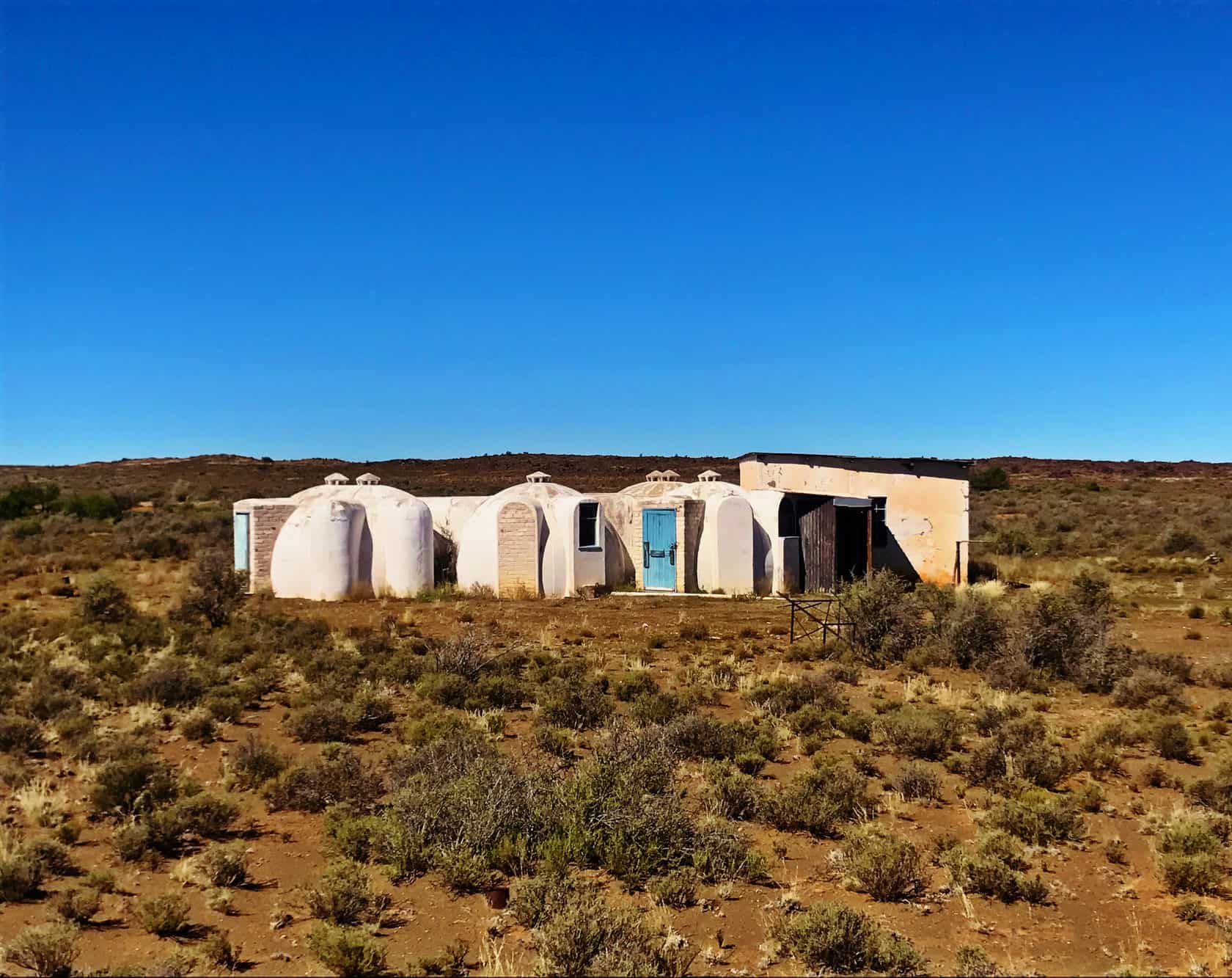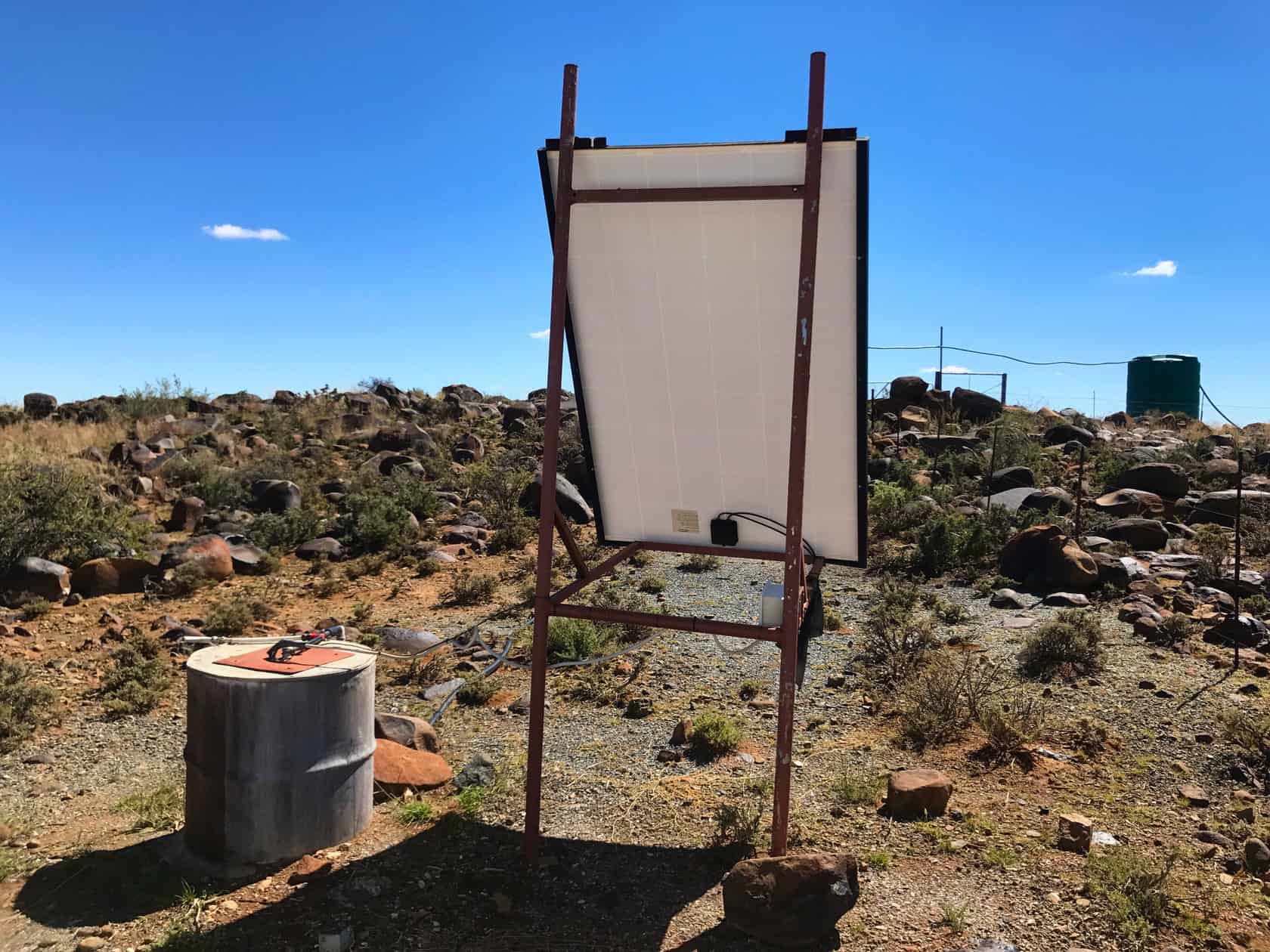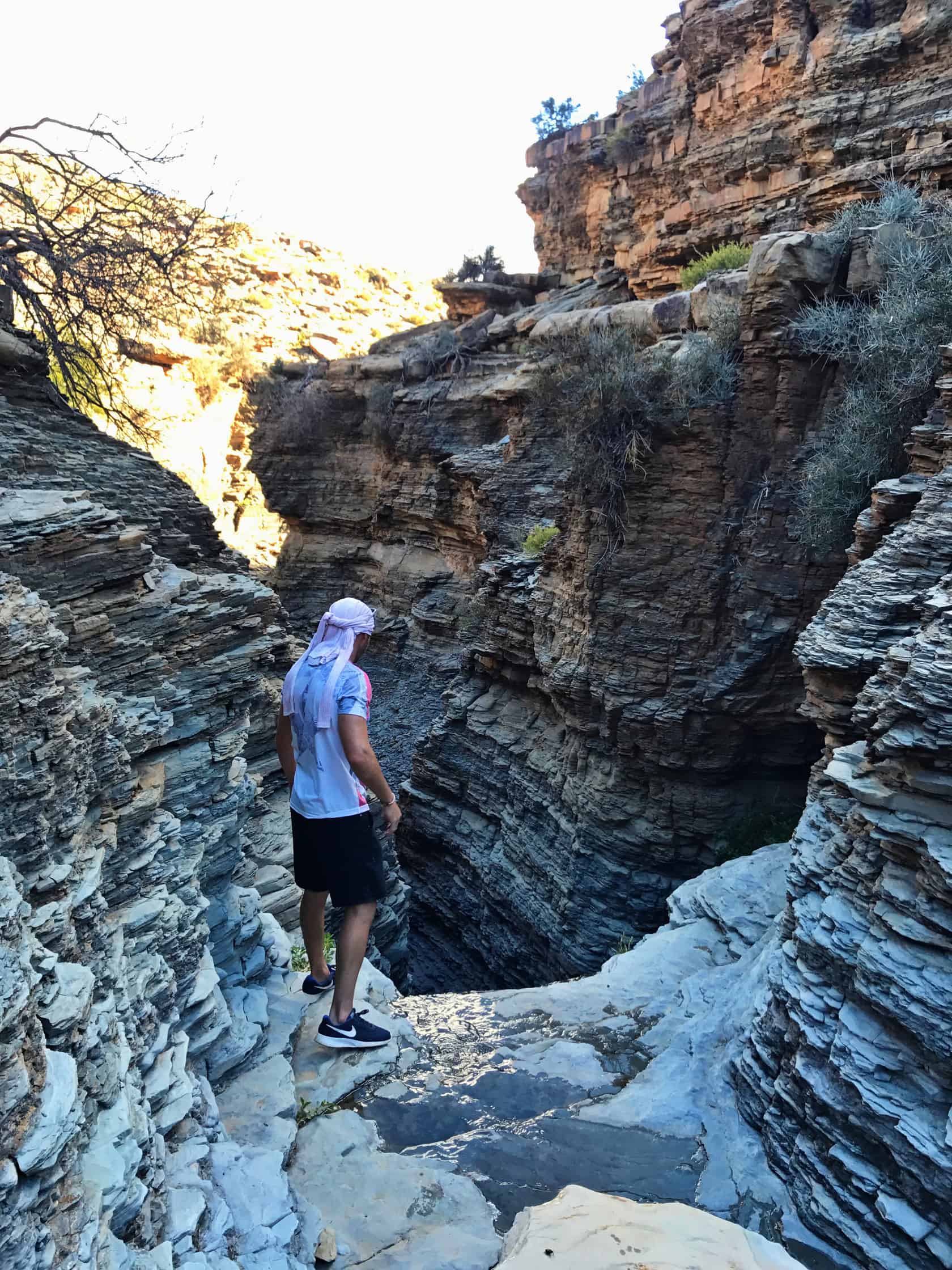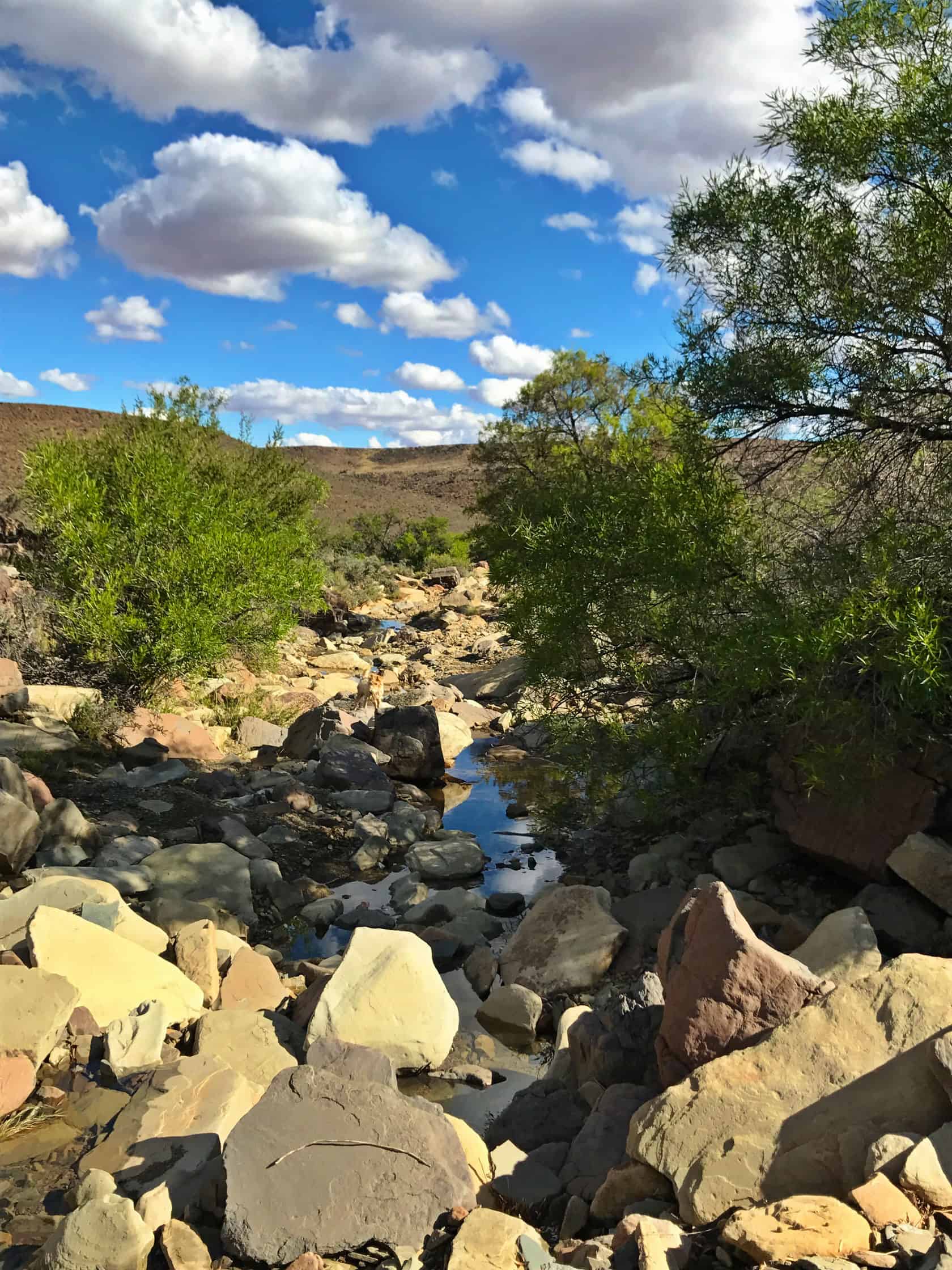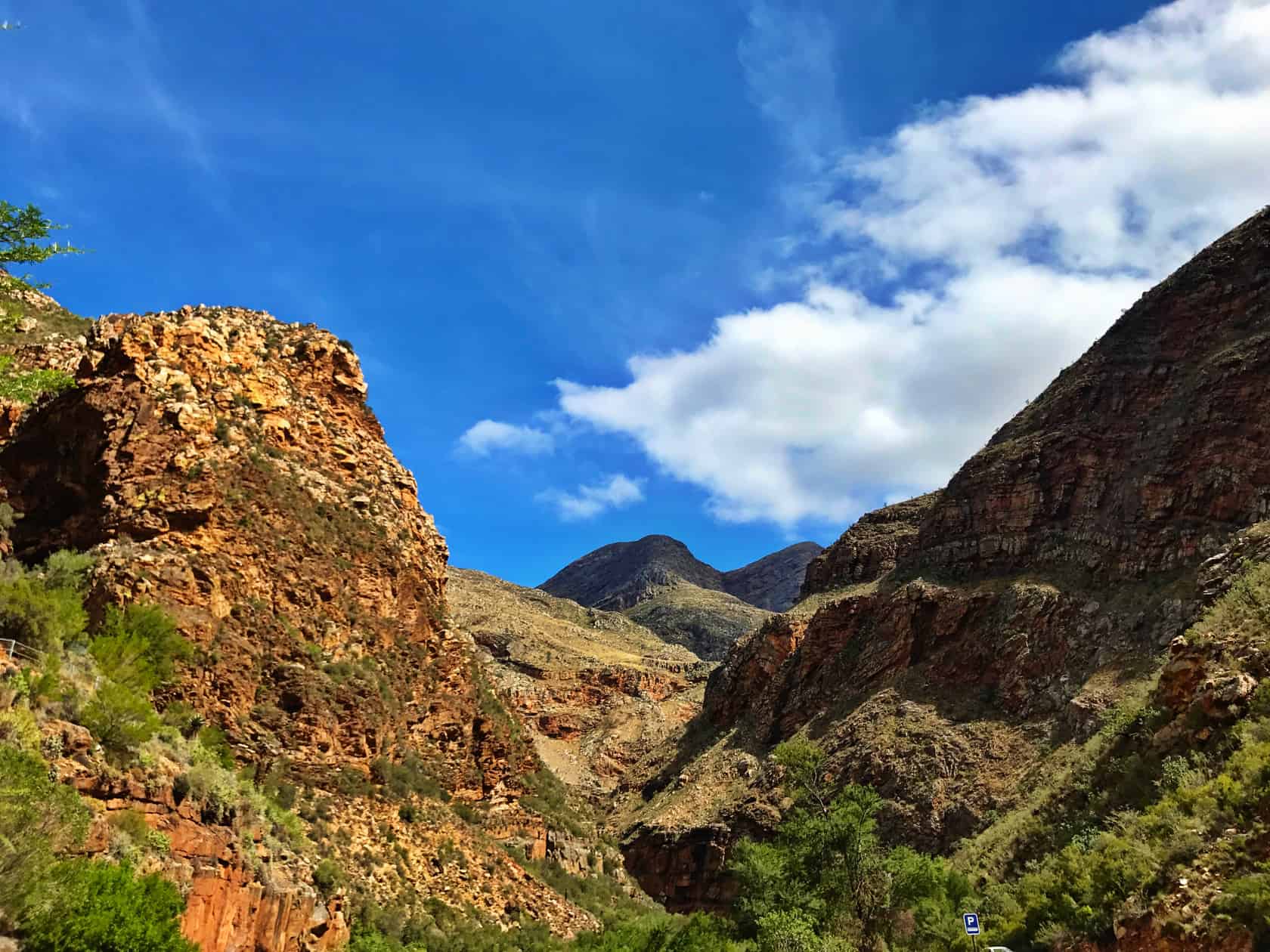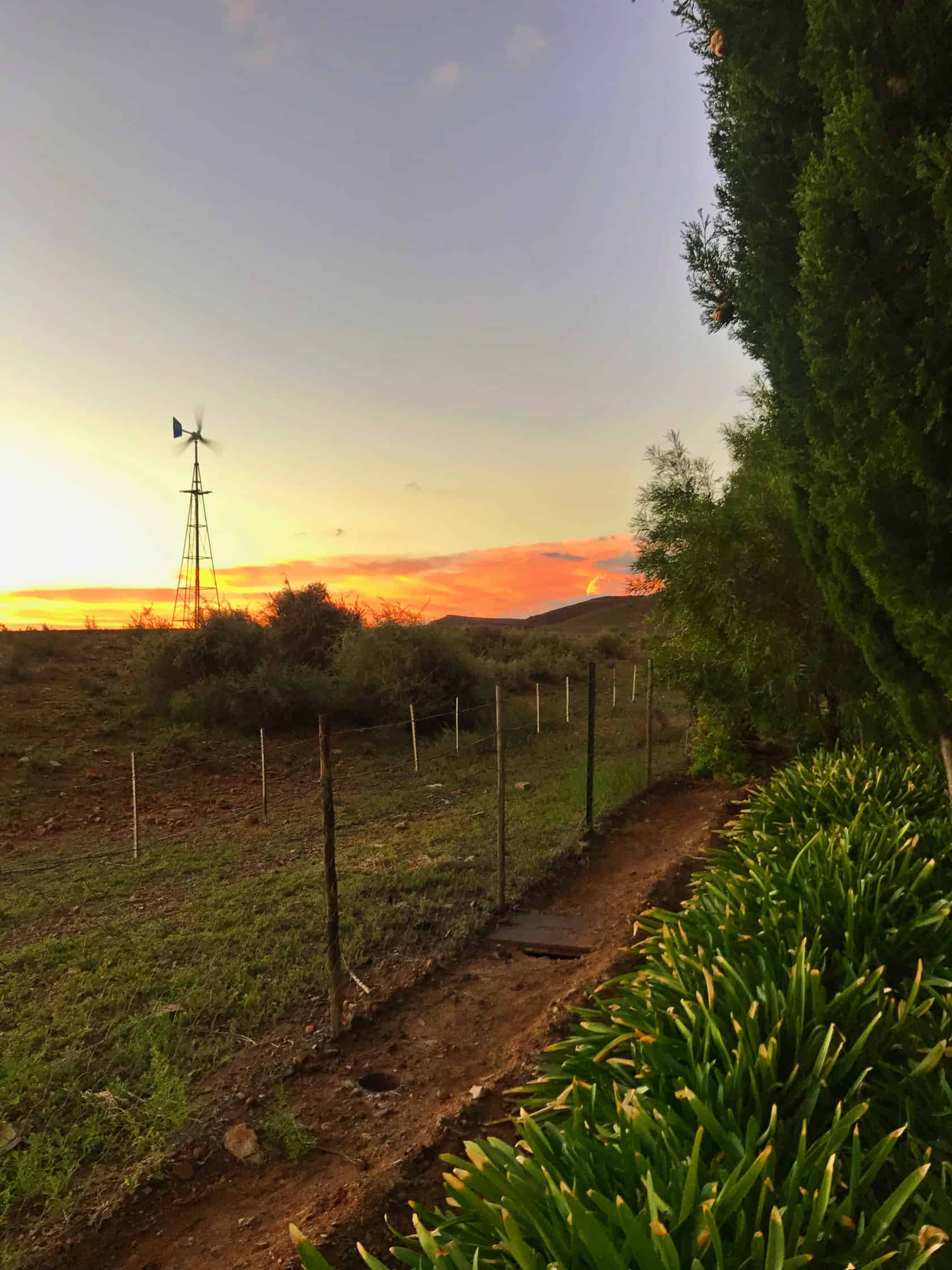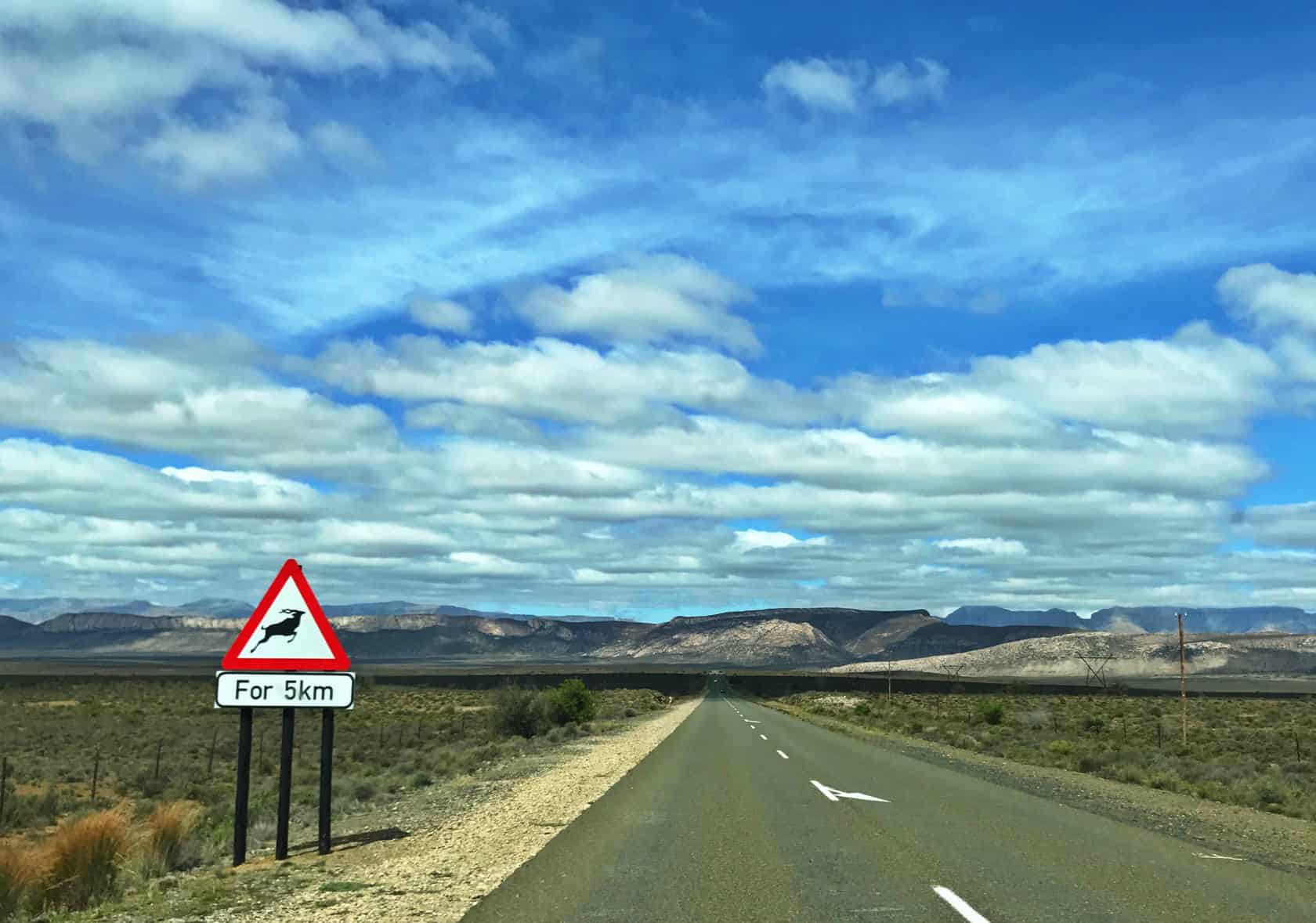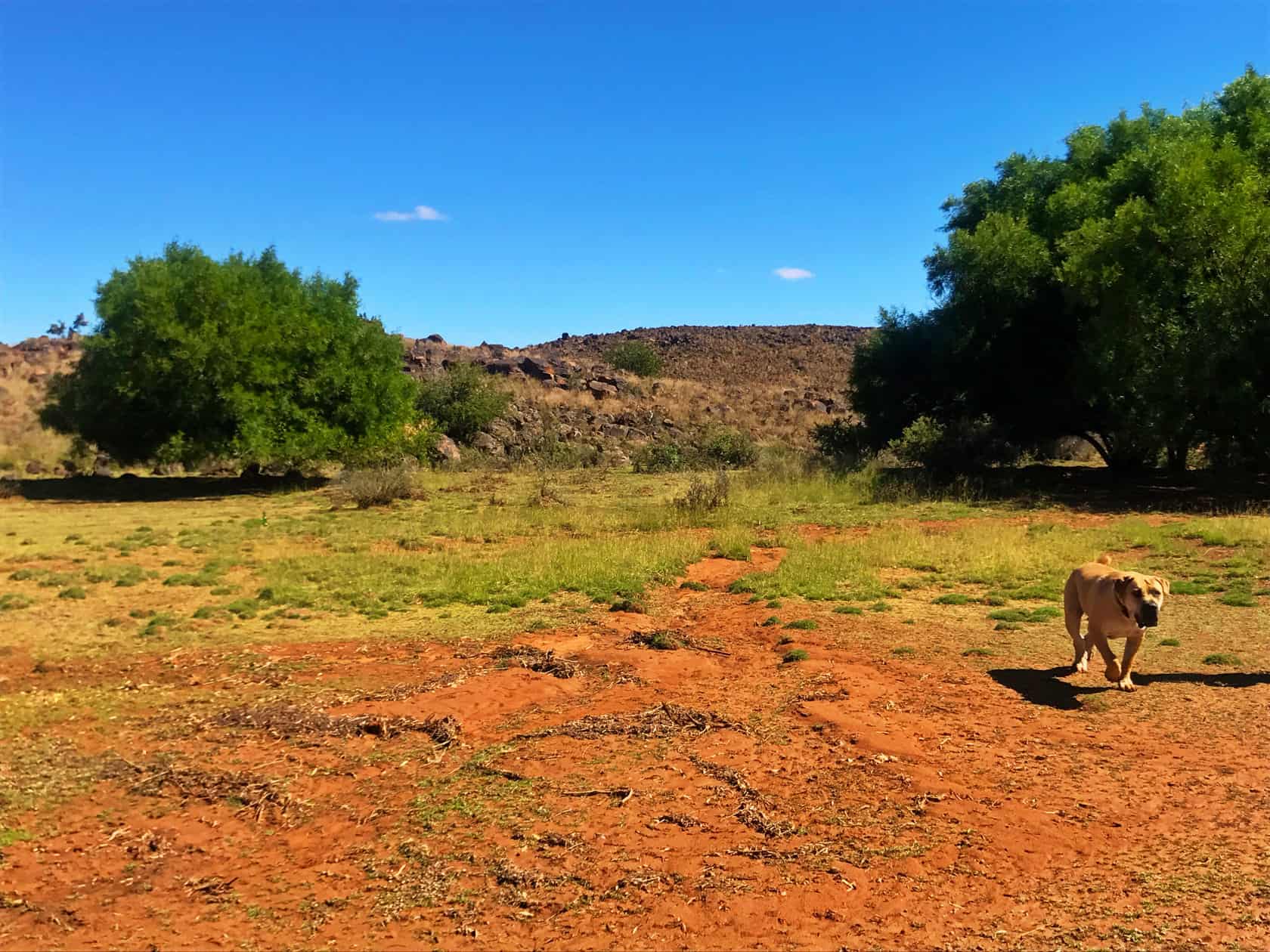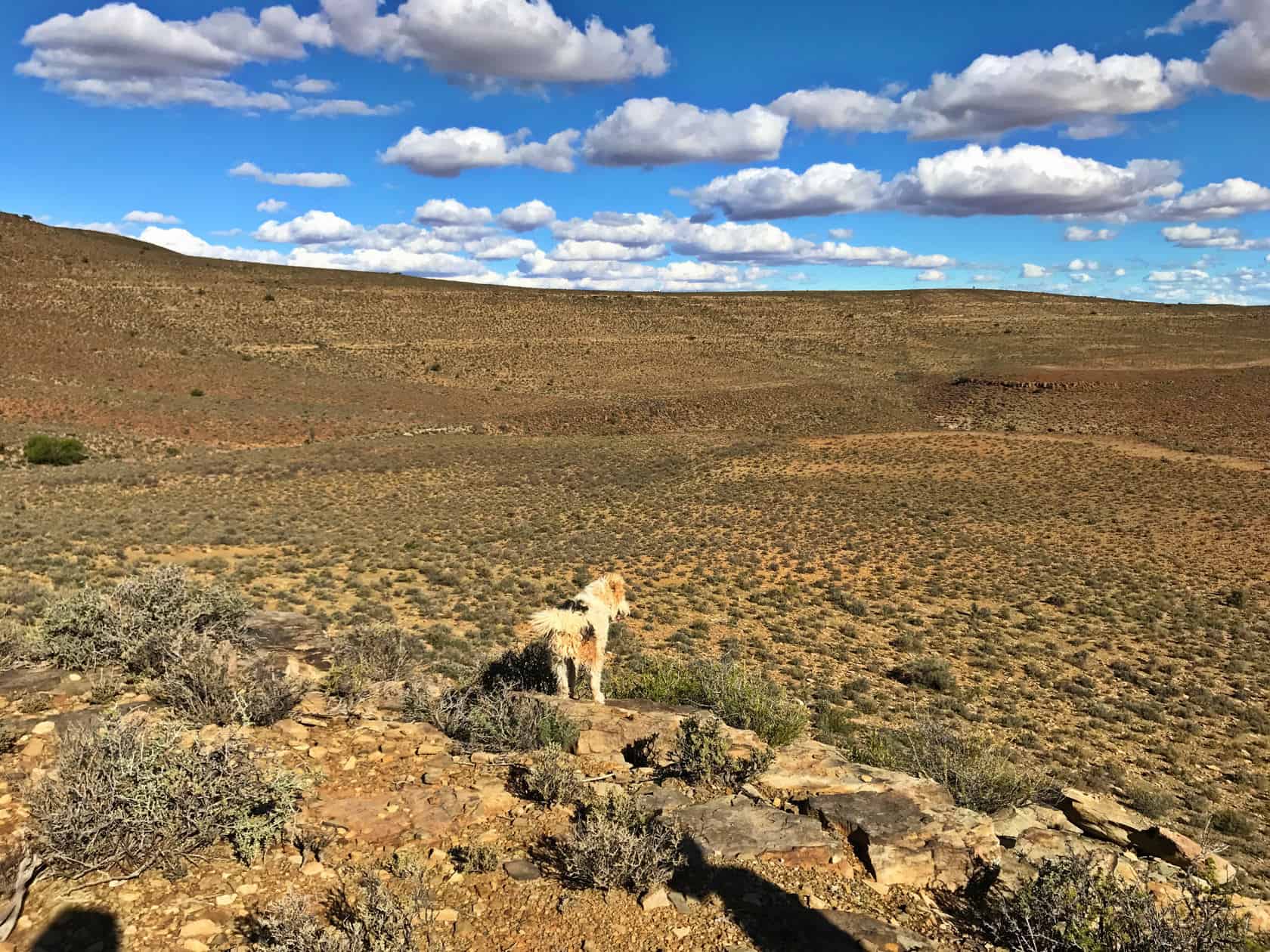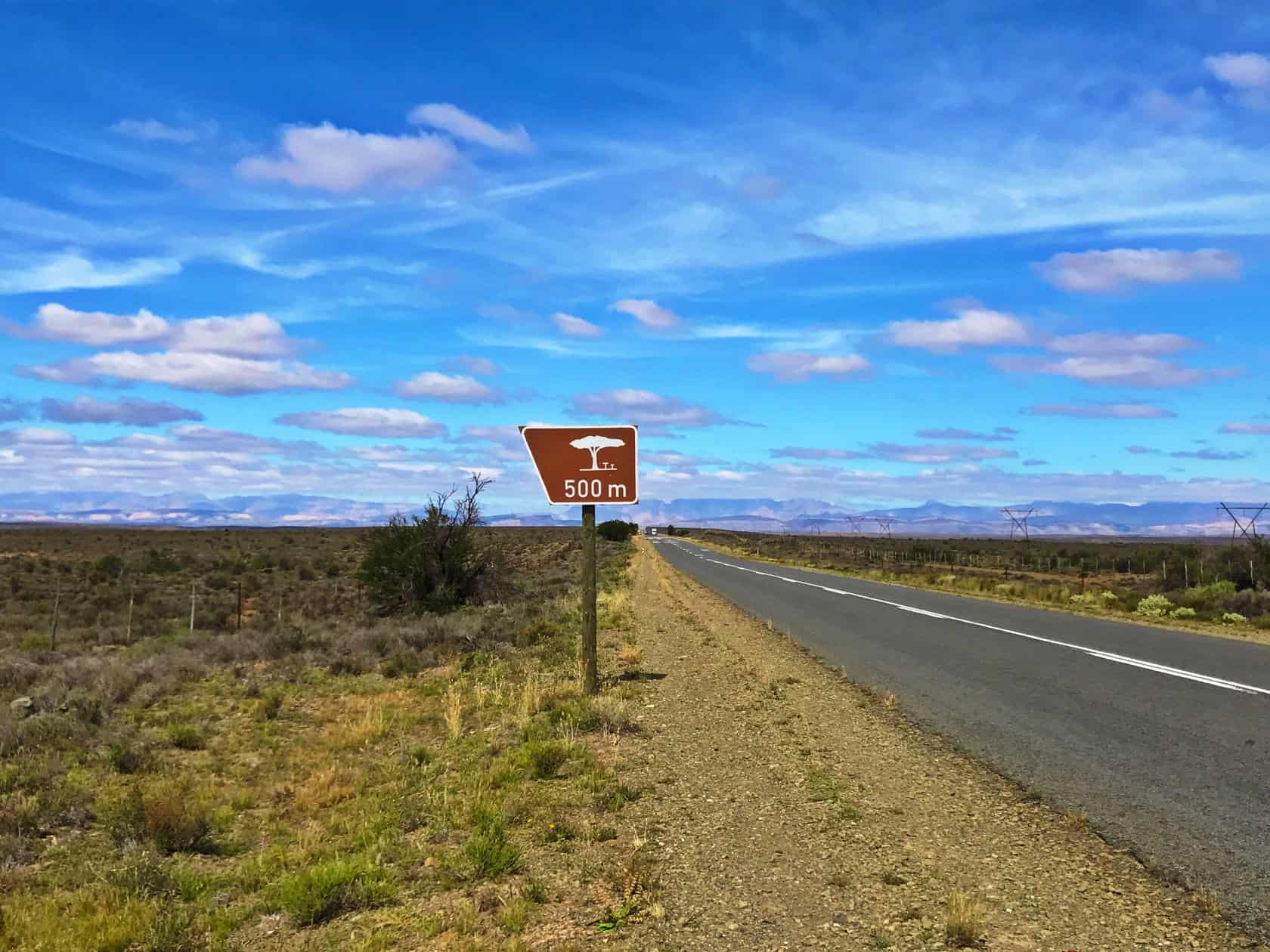With its vast and untamed landscapes, outdoor appeal, and stress-free introspection, the Karoo, South Africa’s semi-desert region, isn’t just a spectacular space for a farmstay, it’s a road tripper’s dream.
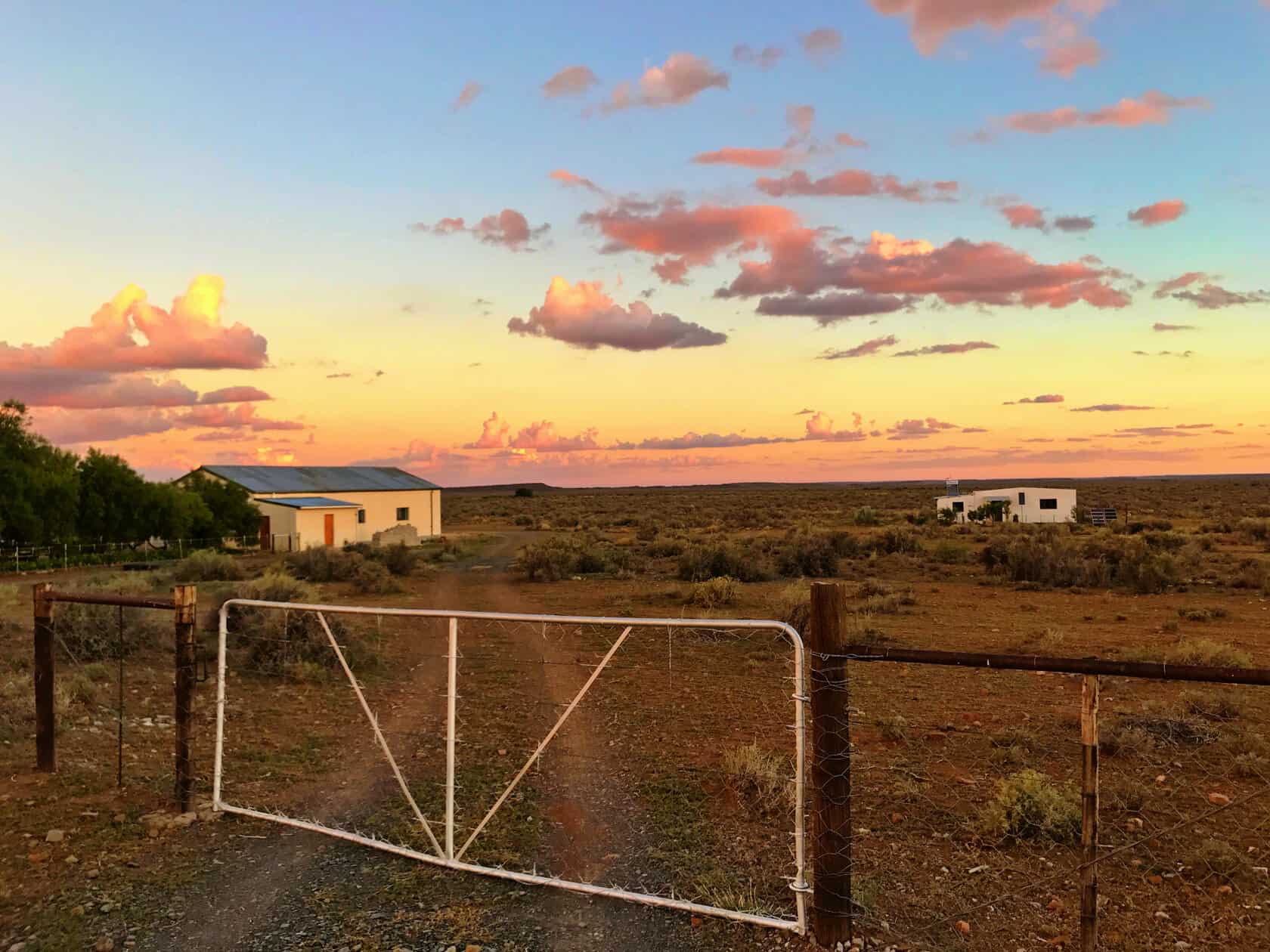
“Agh, not again,” Jacques muttered. We’d hit standstill traffic at another roadblock, causing another 20-minute delay. It was a roasting, sunny day and we were only two hours in to our 10-hour road trip from Johannesburg to the Karoo, South Africa’s semi-desert area of the Northern Cape famed for its farms, delicious lamb, and, as I was told, “being in the middle of nowhere.”
We were on our way to his uncle’s farm near Carnarvon, total population 6,612. Known for its arid climate, flat koppies (hills), and perhaps most notably, its vast expanses of land that render it quite isolated, the Karoo is South Africa’s equivalent of the Aussie Outback. It’s also home to AfrikaBurn, the country’s official edition of the Burning Man festival.
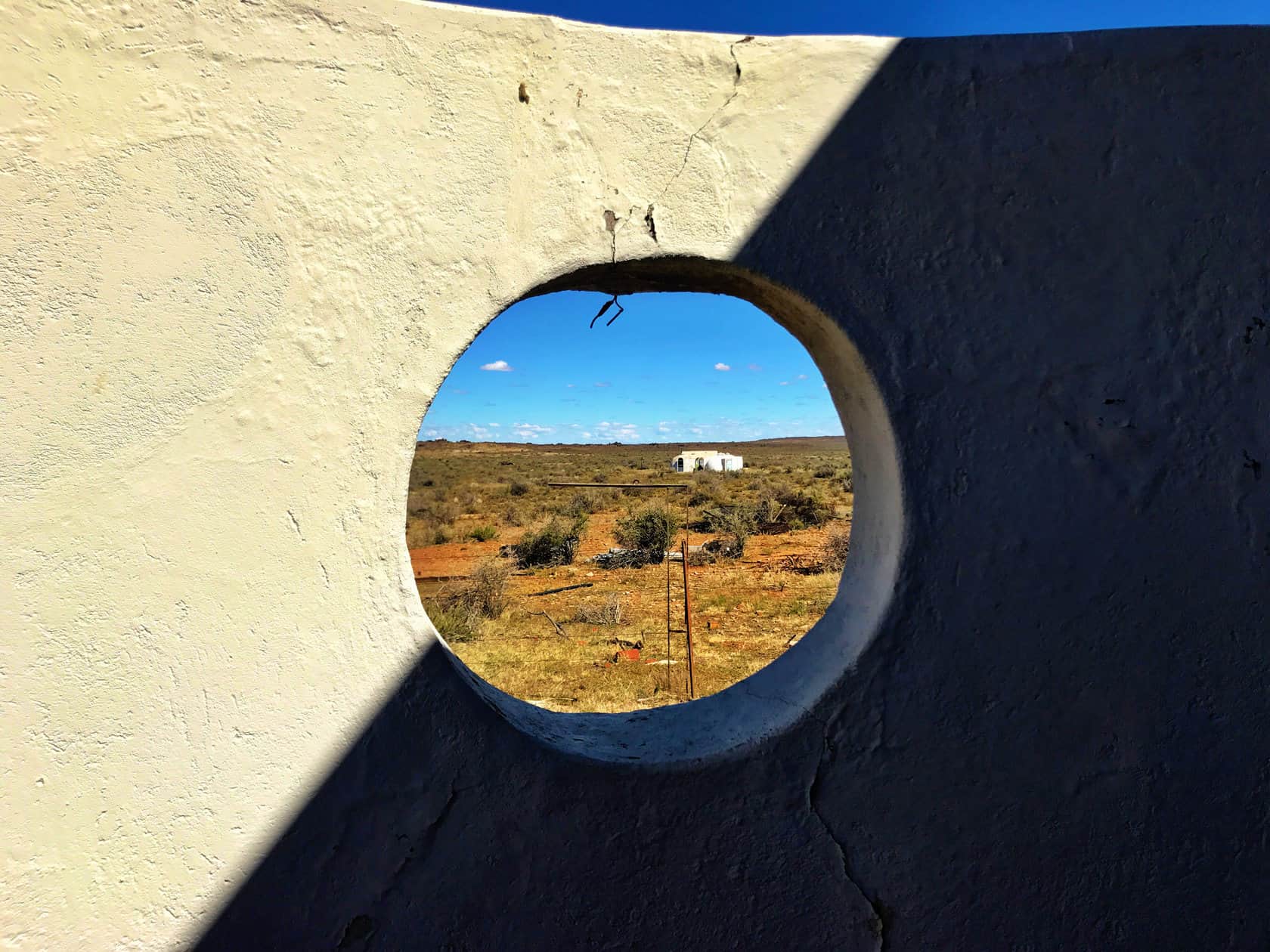
The farm has been part of the family for around 300 years. Jacques’s uncle, Dries Le Roux, was born there and has called it home for 65 years. The climate isn’t suited for produce, but it’s a truly special place in which to farm sheep, along with some goats and cattle. Most notably, Dorper sheep: A South African breed distinct for their white wool and black-colored faces, and a unique taste that’s made it a coveted export to the rest of the country and beyond. Oom Dries (Oom means Uncle in Afrikaans – in South Africa, it’s a sign of respect to call someone Uncle or Aunt even if they’re not a blood relation) says that this is thanks to the bossies, or bush shrubs. “It gives the meat a special, naturally herby taste; that’s why people love Karoo lamb,” he says. Oom Dries has 4-5 people working on his farm and around 1000 sheep, 21 of which have been rounded up for slaughter the next day; “I sell my sheep throughout the year, on a monthly basis. I take the ones that weigh around 40kg to the abattoir in town. The meat is then sent to Cape Town, Johannesburg, Bloemfontein, Durban – all the big centers all over the country. It’s sold to the middlemen and distributors that sell it on to the supermarkets and butcheries.”
“A farm in the desert? That sounds strange!”
Farming in the Karoo is challenging. The area’s natural xerophytic vegetation mainly consists of aloes, succulents, cacti, and other desert ephemerals. “It’s not very easy to farm here – it takes very good planning to be successful. We only get about 120-150mm of rain a year, and because it’s a semi-desert, we haven’t got water to produce vegetables. You must make sure that you save money and maize, especially for the dry periods, because it can stop raining for up to 5 years sometimes. If you don’t, you won’t make it here,” Oom Dries says. I’ve heard that there’s no farmer like a South African farmer, and Oom Dries proudly agrees: “We are the best farmers: If we plant maize, we get the highest yields. If we farm with meat, we get the best prices and have the best sheep and goats. It’s hard work, and you need an eye to pick the right sheep. The harder conditions here teach our farmers to get around it all more carefully, and culturally speaking, South Africans just like to roll up our sleeves and get the job done. We also take real pride in our work and our land, feeding the country and beyond.” He’s right – few other countries take such pride in its farmers, and whether you’re a city kid who has dabbled in the farms dotted closer to the big towns or one that had grown up with a natural education in agriculture, as a nation, people here are generally aware of where their food comes from and what goes into providing it, and they appreciate the immense value of real, fresh food.

The farmhouse, with its lush garden and high-reaching trees, acts as a beacon of home no matter how far you go into the veld. It’s a stark difference from the dry, rocky landscape that stretches as far as the eye can see. There are plenty of hiking trails in the area – unmarked, of course. Here, you have to find your own path. We’re lucky – Boppie, Oom Dries’s sheepdog (who seems half mountain goat) is our guide among the craggy hilltops and steep ravines. I just wish I’d brought some water with me – underestimating how quickly the Karoo air can dehydrate you is a rookie mistake.
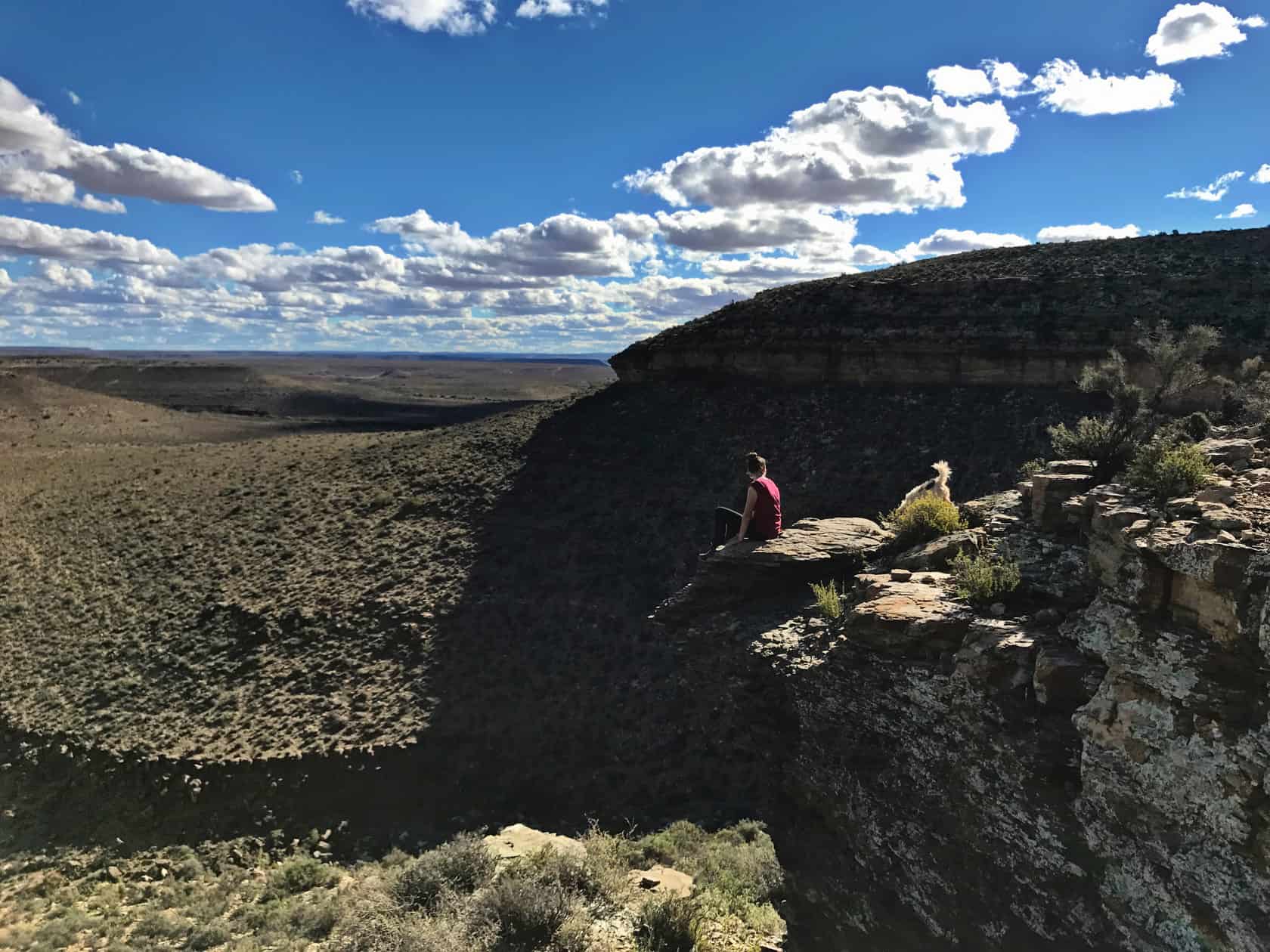
The days are slow-paced. I read, and do yoga amidst the breeze and the birdsong. I forget to charge my phone; there’s hardly any signal anyway. We wake up to coffee on the terrace, head out on hikes and drives, and marvel at the oasis-like puddles amidst the piles of dolerite – black igneous rocks that look as though they were placed there by sculptors, with their immense weight and curious stacking. It’s with these stones from the veld that the famous traditional Corbelled houses of Carnarvon are built; their unique material and shape keep them cool in the summer and warm in the winter. There are two still in use in Carnarvon that have been converted into bed and breakfasts. We shoot cans, perfecting our target practice with air guns, handguns, and rifles, far enough into the wilderness not to scare the sheepdogs. Each shot is a piercing blow to the almost sacred silence. When we’re not doing that, we braai. Never tell a South African that a braai is a BBQ – braai-ing is practically an art form, and calling it a BBQ is almost as insulting to a Saffa as calling their world-famous biltong “jerky”. Family meals are a highlight, spending hours preparing an oxtail potjie, grilled meats, and stews of everything from skaapskenkels – lamb shanks – to sheep’s neck, where the meat is so tender that it falls off the bone at a mere prod of the fork. Like in My Big Fat Greek Wedding, vegetarianism isn’t a traditionally popular choice in South Africa. It’s served with boereboontjies – fluffy mashed green beans and potatoes, rice, bacon-laced roast potatoes, and fresh crunchy salads, followed by fresh fruits, malva pudding, trifles, and many drinks by the fire under the trees.


“My favorite thing about the Karoo is the silence, and the people. They’re just special. They don’t like stealing, lying, or cheating. They like to sit down, have a conversation, and a braai. Everyone knows each other pretty well, and my nearest neighbor is around 10km away – my farm is about 5000 hectares,” Oom Dries says, continuing: “If you come to the Karoo, people accept you. They swallow you into the community; you feel at welcome and at home, like part of the family. Everybody greets everybody. It’s very different from the rest of South Africa. If you stay in a block of flats in Cape Town, chances are you’ll never even known your neighbor.” Perhaps it’s the isolation that makes it feel safe – since everyone knows each other, there is distinctly less crime than many other troubled parts of the country. “It can be difficult to stay here – we must go to town to buy anything. That’s the main thing I miss about the city. We haven’t got the feet here to put up a supermarket, and the nearest hospital is a few towns away. But there’s nowhere else in the world that I’d rather be.”
We had come seeking adventure, but as clichéd as it sounds, the real adventure here is an internal one. There is plenty of time on the farm to contemplate life, gaze at the uninterrupted expanse of stars at night, and jol with the family. “They say when you come here you can shed a lot of tears from the things you think you lose from big city life, but that if you leave, you’ll shed even more tears,” Oom Dries says. I believe it. The tranquility here is deep and thick; it envelops you. The days of the week blur together. Your walking boots accumulate thick globs of reddish mud, a reminder of your excursions into the unknown. Each evening, the blue skies give way to romantic fiery sunsets that look as though the horizon was doused in buckets of paint in hues of red, pink, and gold, before melting into a sooty velvet canopy so clear you may even glimpse the Milky Way. And when the wind howls, it’s almost like it sings, whispering, “You’ve been bitten by the wild magic of the Karoo.” It is the antidote to the hectic pace of modern city life. And you know you’re going to come back.
This is Yi-Hwa Hanna’s first FitWild adventure! More to come in the future. http://www.yihwahanna.com
FitWild travels to Morocco’s Atlas Mountains “Running the Trans Atlas Marathon” – the next feature!

